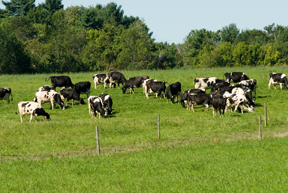Lesson 3. Fencing Systems
 Fencing — just mentioning the word brings about a wild consortium of emotional thoughts for most livestock producers. There are no “right” fence styles or types for all operations or situations; it is a matter of preference. Economic considerations must be taken into account when building, replacing or mending fence.
Fencing — just mentioning the word brings about a wild consortium of emotional thoughts for most livestock producers. There are no “right” fence styles or types for all operations or situations; it is a matter of preference. Economic considerations must be taken into account when building, replacing or mending fence.
Before you set the first corner post, take time to cover a few non-fence building issues. Contact your local zoning office and find out setback requirements. You may be subject to new regulations, even if you are replacing an older existing fence. Also, there may be local requirements on the type or style of fencing. The task of fencing is usually “pleasant” enough the first time; you don’t want to have to do it twice.
There are also legal issues that focus on fencing. State or local laws might be found in the law library at the local courthouse. Check this out before you tear out that old boundary fence. It is a good idea to talk over your fencing plans with the neighbor whose property will be next to the fence.
Many livestock producers shy away from electric fences in favor of the five-strand, barbed wire or woven wire fence with metal T-posts. Today, high tensile electric fences are generally more economical fences because they tend to be less expensive and are easier to install and maintain.
The materials cost vary depending on the type of fence, how it is constructed and the site on which it is located. Factors to consider are corner posts, terrain and the type of animals to keep in or fence out. High tensile is the cheapest part of an electric fence. Posts (either wood, fiberglass or metal), gates, energizers, and insulators increase fencing costs the most. An example is given later in the lesson. The best way to compare costs of different fencing systems is to do so over a constant distance (ie. one mile).
There are many good publications and materials on electric fencing systems. Rather than reinventing the wheel we have included information already in publication. David W. Pratt, Farm Adviser with the University of California Cooperative Extension Service, wrote the following materials for this lesson. We have modified some of D. Pratt’s papers for our local conditions.
